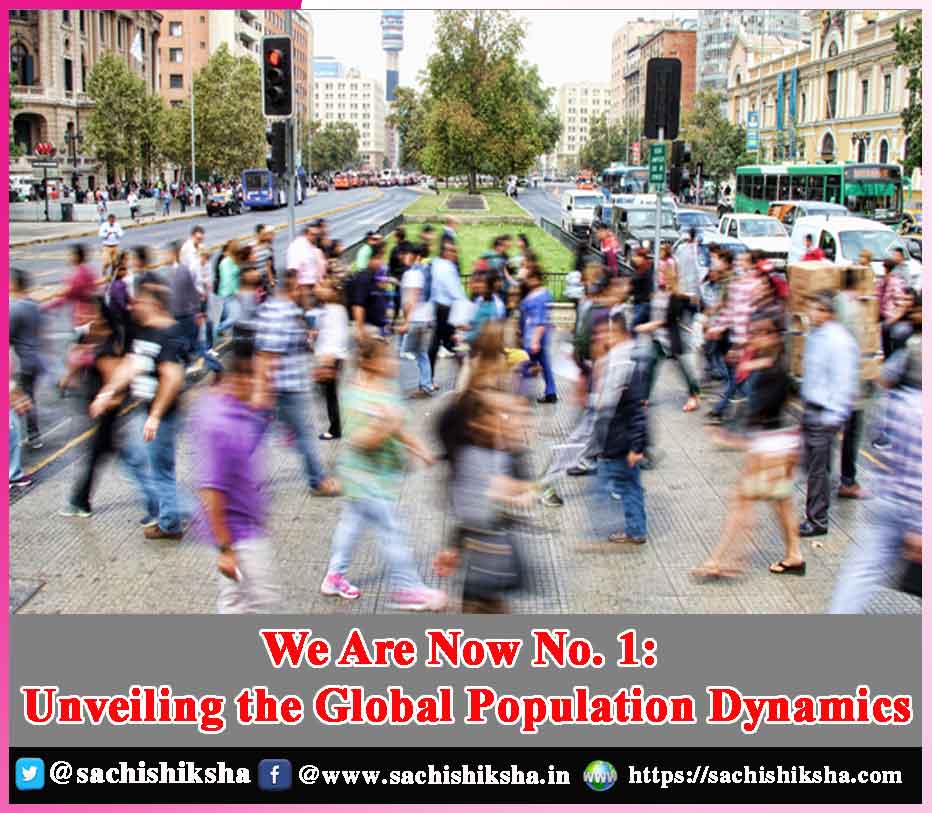We Are Now No.1: Unveiling the Global Population Dynamics
Introduction
In an era of unprecedented human progress, we find ourselves at a pivotal moment in history. We are now No. 1 in terms of global population. The dynamics of our planet’s inhabitants have undergone a profound transformation, fuelled by a myriad of factors. Let us delve into the causes behind this population surge, the implications it holds for our society and the challenges and opportunities that lie ahead as we navigate this new demographic landscape.
Also Read:-
- Hey It Is Just A Deal, No Big Deal
- Global Plaque Award to Guru Ji
- Global Warming and Species Extinction
Table of Contents
The Shift in Population Dynamics

Moreover, global fertility rates have played a crucial role in this population shift. While fertility rates have declined in many developed nations, several regions, particularly in Africa and Asia, continue to experience high birth rates. This demographic imbalance creates unique challenges and opportunities for countries as they strive to address the needs and aspirations of their growing populations.
Implications and Challenges
The changing population dynamics have far-reaching implications for various aspects of our society. One of the most significant impacts is the strain it places on essential resources such as food, water, and energy. With an increasing number of mouths to feed and livelihoods to sustain, it becomes imperative to find sustainable solutions to meet these growing demands.
Urbanization is another consequence of the population boom. As more people migrate from rural to urban areas, cities must adapt to accommodate the influx. The rapid growth of urban centers brings both opportunities for economic development and challenges related to infrastructure, housing, transportation, and social services.
Additionally, the changing demographics pose unique challenges for healthcare systems. The aging population in many developed nations demands specialized care and support, while developing countries face the dual challenge of combating infectious diseases and meeting the healthcare needs of their expanding populations.
Furthermore, the No. 1 population status has implications for environmental sustainability. The increased consumption patterns associated with a larger population put additional strain on the planet’s ecosystems and contributes to climate change. It becomes crucial to adopt environmentally friendly practices, promote renewable energy sources, and reduce our carbon footprint to ensure a sustainable future for generations to come.
Opportunities and the Way Forward
While the population surge presents challenges, it also offers opportunities for innovation, economic growth, and cultural diversity. A larger workforce can drive technological advancements, enhance productivity, and stimulate economic development. Moreover, a diverse population brings different perspectives, skills, and experiences that foster creativity and progress.
To navigate the changing population dynamics successfully, countries need to prioritize sustainable development and invest in education, healthcare, and infrastructure. Implementing family planning programs, promoting gender equality, and empowering women can help manage population growth responsibly.
International cooperation is crucial to address global challenges associated with population dynamics. Sharing knowledge, best practices, and resources can foster sustainable development, improve healthcare systems, and promote social equality worldwide.
Conclusion
As we embrace our new position as the No. 1 global population, we must recognize the immense responsibilities and opportunities it brings. By understanding the causes behind this demographic shift, acknowledging the implications it carries, and working collectively towards sustainable solutions, we can shape a brighter future for all. Our ability to adapt, innovate, and collaborate will determine how successfully we navigate the changing dynamics of our global population.













































